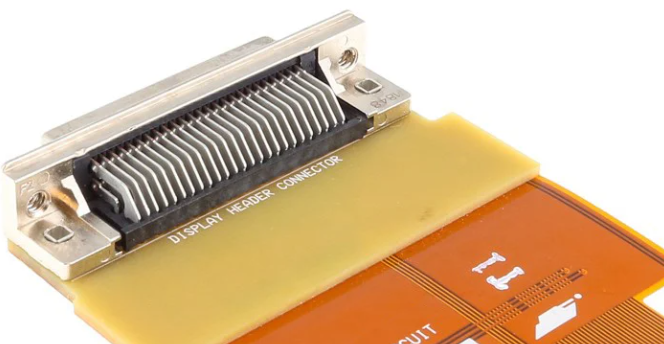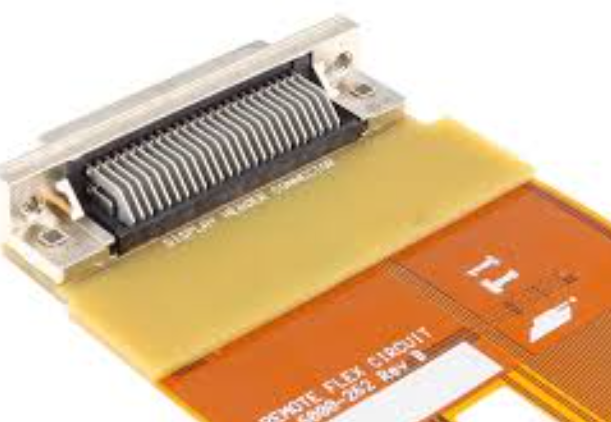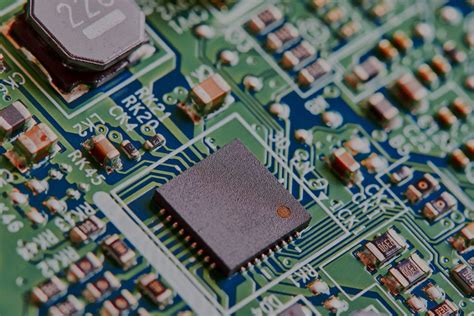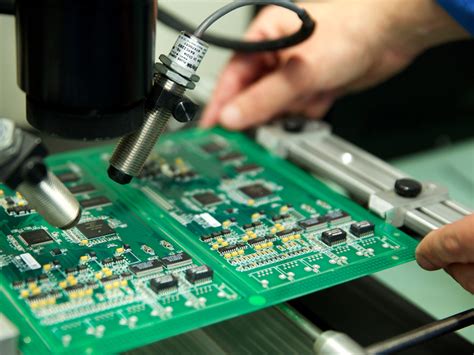Flex Connector PCB: Revolutionizing Modern Electronics
Introduction
The rapid advancement of technology has led to the increasing demand for more compact, flexible, and efficient electronic devices. In this context, the Flex Connector PCB (Printed Circuit Board) has emerged as a critical component in modern electronics. Flex connector PCBs, also known as flexible printed circuit boards, are designed to provide a reliable and versatile solution for connecting electronic components in devices where space, weight, and flexibility are paramount. This article delves into the intricacies of flex connector PCBs, exploring their design, applications, advantages, and future prospects.
What is a Flex Connector PCB?
A Flex Connector PCB is a type of printed circuit board that is made from flexible materials, such as polyimide or polyester, which allow the board to bend, twist, and fold without breaking. Unlike traditional rigid PCBs, which are made from materials like fiberglass, flex connector PCBs are designed to be lightweight, thin, and highly adaptable to various shapes and configurations. This flexibility makes them ideal for use in applications where space is limited, or where the PCB needs to conform to a specific shape.
Flex connector PCBs typically consist of multiple layers of conductive traces, insulating materials, and protective coatings. These layers are laminated together to form a flexible circuit that can be easily integrated into a wide range of electronic devices. The conductive traces are usually made of copper, which provides excellent electrical conductivity, while the insulating layers are made of materials like polyimide, which offer high thermal stability and resistance to mechanical stress.

Design Considerations for Flex Connector PCBs
Designing a flex connector PCB requires careful consideration of several factors to ensure optimal performance and reliability. Some of the key design considerations include:
- Material Selection: The choice of materials is crucial in determining the flexibility, durability, and thermal performance of the flex connector PCB. Polyimide is the most commonly used material for the insulating layers due to its excellent thermal stability, mechanical strength, and flexibility. For the conductive traces, copper is the preferred material due to its high electrical conductivity and ease of fabrication.
- Layer Configuration: Flex connector PCBs can be designed as single-layer, double-layer, or multi-layer circuits, depending on the complexity of the application. Single-layer flex circuits are the simplest and most cost-effective, while multi-layer circuits offer higher density and more complex routing options.
- Bend Radius: One of the most critical design considerations for flex connector PCBs is the bend radius, which is the minimum radius that the PCB can be bent without causing damage to the conductive traces. The bend radius is determined by the thickness of the PCB and the materials used. Designers must ensure that the bend radius is sufficient to prevent cracking or breaking of the conductive traces during installation or operation.
- Thermal Management: Flex connector PCBs are often used in applications where heat dissipation is a concern. Designers must consider the thermal properties of the materials used and incorporate features such as thermal vias or heat sinks to ensure effective heat dissipation.
- Mechanical Stress: Flex connector PCBs are subjected to various mechanical stresses, such as bending, twisting, and vibration, during their lifetime. Designers must ensure that the PCB is designed to withstand these stresses without compromising its electrical performance. This can be achieved by using materials with high mechanical strength and by incorporating stress-relief features in the design.
- Signal Integrity: Maintaining signal integrity is crucial in high-speed and high-frequency applications. Designers must carefully route the conductive traces to minimize signal loss, crosstalk, and electromagnetic interference (EMI). This may involve using controlled impedance routing, differential pairs, and shielding techniques.

Applications of Flex Connector PCBs
Flex connector PCBs are used in a wide range of applications across various industries due to their unique properties and advantages. Some of the most common applications include:
- Consumer Electronics: Flex connector PCBs are widely used in consumer electronics, such as smartphones, tablets, laptops, and wearable devices. Their flexibility and compact size make them ideal for use in devices where space is limited, and where the PCB needs to conform to the shape of the device.
- Automotive: In the automotive industry, flex connector PCBs are used in various applications, including infotainment systems, engine control units, and advanced driver-assistance systems (ADAS). Their ability to withstand harsh environmental conditions, such as temperature fluctuations, vibration, and moisture, makes them well-suited for use in vehicles.
- Medical Devices: Flex connector PCBs are used in a variety of medical devices, such as pacemakers, hearing aids, and diagnostic equipment. Their flexibility and reliability are critical in medical applications, where the PCB may need to be integrated into small, complex, and highly sensitive devices.
- Aerospace and Defense: In the aerospace and defense industries, flex connector PCBs are used in applications such as avionics, communication systems, and missile guidance systems. Their lightweight and high reliability are essential in these applications, where performance and durability are critical.
- Industrial Equipment: Flex connector PCBs are used in various industrial applications, including robotics, automation, and control systems. Their ability to withstand harsh industrial environments, such as high temperatures, humidity, and mechanical stress, makes them ideal for use in these applications.
Advantages of Flex Connector PCBs
Flex connector PCBs offer several advantages over traditional rigid PCBs, making them the preferred choice for many applications. Some of the key advantages include:
- Flexibility: The most obvious advantage of flex connector PCBs is their flexibility. This allows them to be bent, twisted, and folded to fit into tight spaces and conform to the shape of the device. This flexibility also makes them more resistant to mechanical stress, such as vibration and shock.
- Space and Weight Savings: Flex connector PCBs are much thinner and lighter than rigid PCBs, making them ideal for use in compact and lightweight devices. This is particularly important in applications such as consumer electronics and aerospace, where space and weight are critical factors.
- Improved Reliability: Flex connector PCBs are more reliable than rigid PCBs in applications where the PCB is subjected to mechanical stress or environmental conditions. Their flexibility allows them to absorb and distribute stress more effectively, reducing the risk of failure.
- Simplified Assembly: Flex connector PCBs can simplify the assembly process by reducing the number of interconnects and connectors required. This can lead to lower assembly costs and improved reliability.
- Enhanced Signal Integrity: Flex connector PCBs can offer better signal integrity in high-speed and high-frequency applications. Their ability to be routed in three dimensions allows for shorter signal paths and reduced signal loss, crosstalk, and EMI.
- Cost-Effectiveness: While the initial cost of flex connector PCBs may be higher than rigid PCBs, they can be more cost-effective in the long run. Their improved reliability, reduced assembly costs, and space savings can lead to lower overall costs for the device.
Challenges and Future Prospects
Despite their many advantages, flex connector PCBs also present some challenges that need to be addressed. One of the main challenges is the complexity of the design and manufacturing process. Designing a flex connector PCB requires specialized knowledge and expertise, and the manufacturing process can be more complex and time-consuming than that of rigid PCBs. Additionally, the materials used in flex connector PCBs can be more expensive than those used in rigid PCBs, which can increase the overall cost.
Another challenge is the limited availability of standardized design rules and guidelines for flex connector PCBs. This can make it difficult for designers to ensure that their designs are optimized for performance and reliability. However, as the use of flex connector PCBs continues to grow, it is likely that more standardized design rules and guidelines will be developed.
Looking to the future, the demand for flex connector PCBs is expected to continue to grow as the trend towards smaller, lighter, and more flexible electronic devices continues. Advances in materials science, manufacturing technology, and design tools are likely to further improve the performance, reliability, and cost-effectiveness of flex connector PCBs. Additionally, the development of new applications, such as flexible displays, wearable electronics, and Internet of Things (IoT) devices, is expected to drive further innovation in the field of flex connector PCBs.
Conclusion
Flex connector PCBs have revolutionized the electronics industry by providing a flexible, lightweight, and reliable solution for connecting electronic components in a wide range of applications. Their unique properties and advantages make them the preferred choice for many applications, from consumer electronics to aerospace and defense. While there are some challenges associated with the design and manufacturing of flex connector PCBs, ongoing advancements in technology are likely to overcome these challenges and further enhance the performance and cost-effectiveness of these versatile components. As the demand for smaller, lighter, and more flexible electronic devices continues to grow, flex connector PCBs are poised to play an increasingly important role in shaping the future of electronics.







